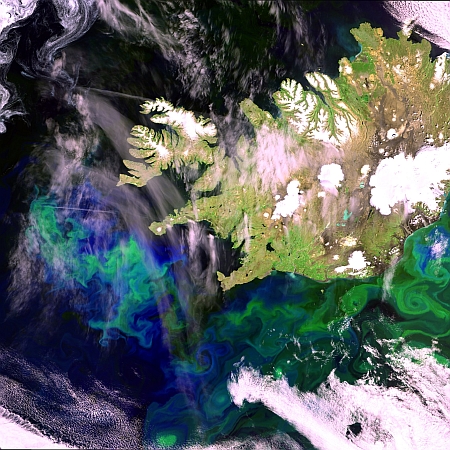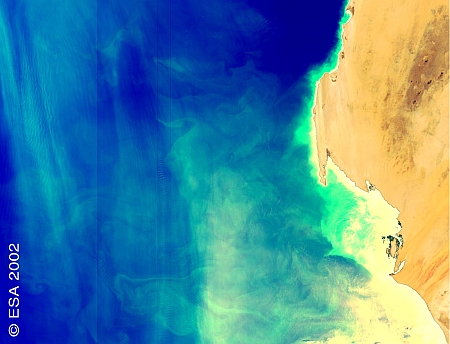3. Harmful Algal Blooms
What are they?
Most algal species do not cause any harm. Algae, in general, are beneficial because they provide the main source of energy that sustains marine life. However a small percentage of algal species does cause harm to humans, animals and/or the environment through toxin production or excessive growth.
Contrary to common beliefs, discoloration of the water does not indicate whether an algal species is harmful! Many nontoxic species produce red tides or brown tides, while some Harmful Algal Blooms can occur without any discoloration of the water.

Source: ESA
Harmful algae include both microalgae (microscopic, single celled organisms) and macroalgae (seaweeds). The majority of the harmful algal species are phytoplankton, a type of microalgae, which live suspended in the water or attached to plants. Marine Harmful Algal Blooms (HABs) are those blooms that occur in oceans, coastal waters, and estuaries.
Harmful Algal Blooms (HABs) are mass occurences of microscopic algae that harm the environment and humans by producing toxins that accumulate in shellfish or fish, or through the accumulation of biomass that in turn affects co-occurring organisms and alters food webs in negative ways.
Where do they come from?
Algal blooms in the oceans are a natural phenomenon. They usually occur in environments with high nutrient contents. Nutrients such as nitrogen and phosphorus are essential for maintaining primary production and thus the healthy structure and functioning of aquatic ecosystems. However excess amounts of nutrients stimulate excessive plant growth, also known as eutrophication or algal bloom.
Human-induced environmental changes that may foster the development of certain Harmful Algal Blooms include
- Changes in nutrient regimes (for example through an increase in application of agricultural fertilisers)
- Alteration of food webs by overfishing
- Introductions of alien species
- Modifications of river catchments (for example by withdrawal of water from rivers for irrigation)
The dynamics of Harmful Algal Blooms are also influenced by factors that are interconnected with the climate. These include
- Water temperature
- Stratification of different layers of the ocean
- Upwelling and ocean circulation patterns
- Freshwater and land-derived nutrient inputs (are influenced for example by rainfall patterns)
Thus climate change will almost certainly influence the dynamics of Harmful Algal Blooms in one way or the other!

Source: ESA